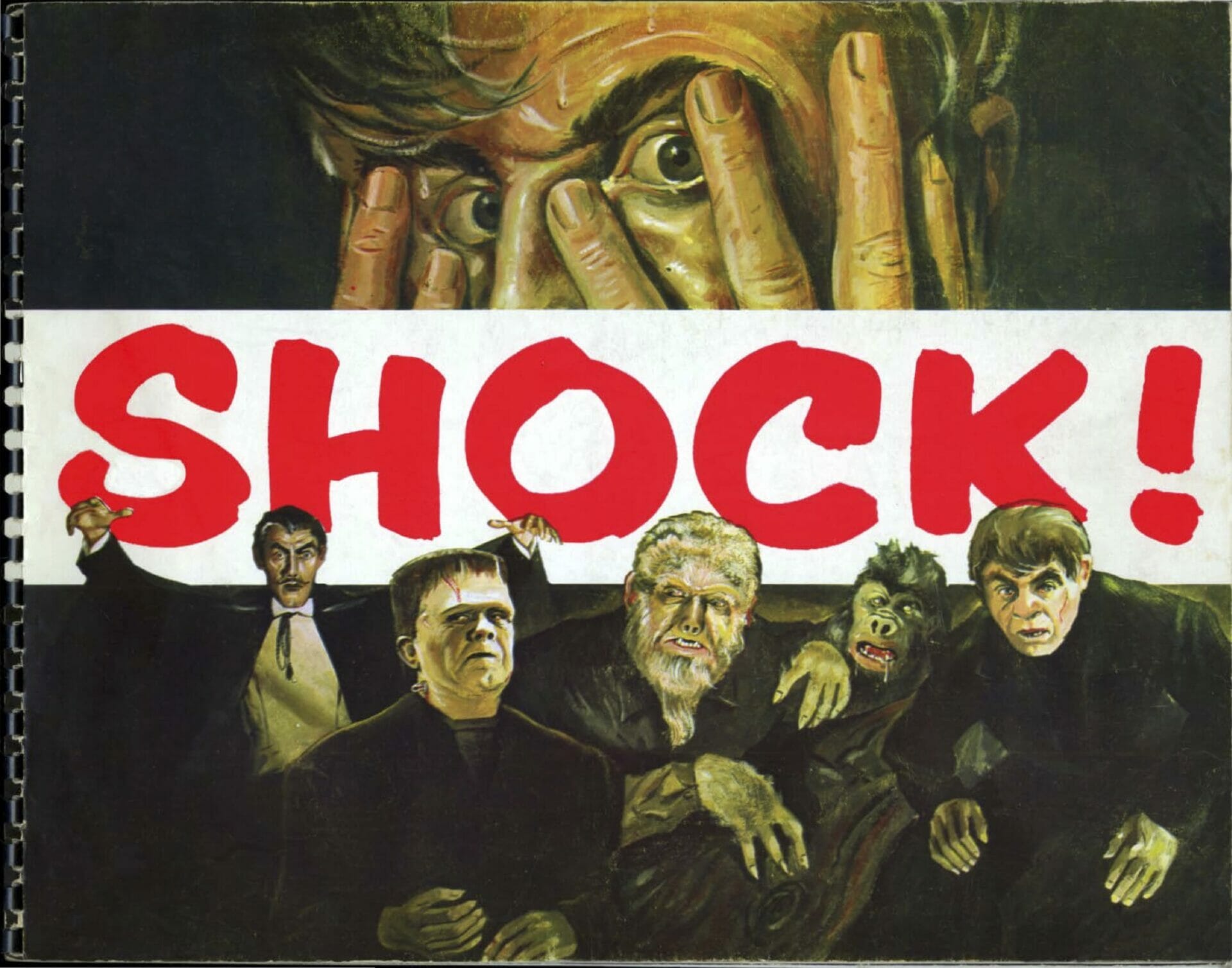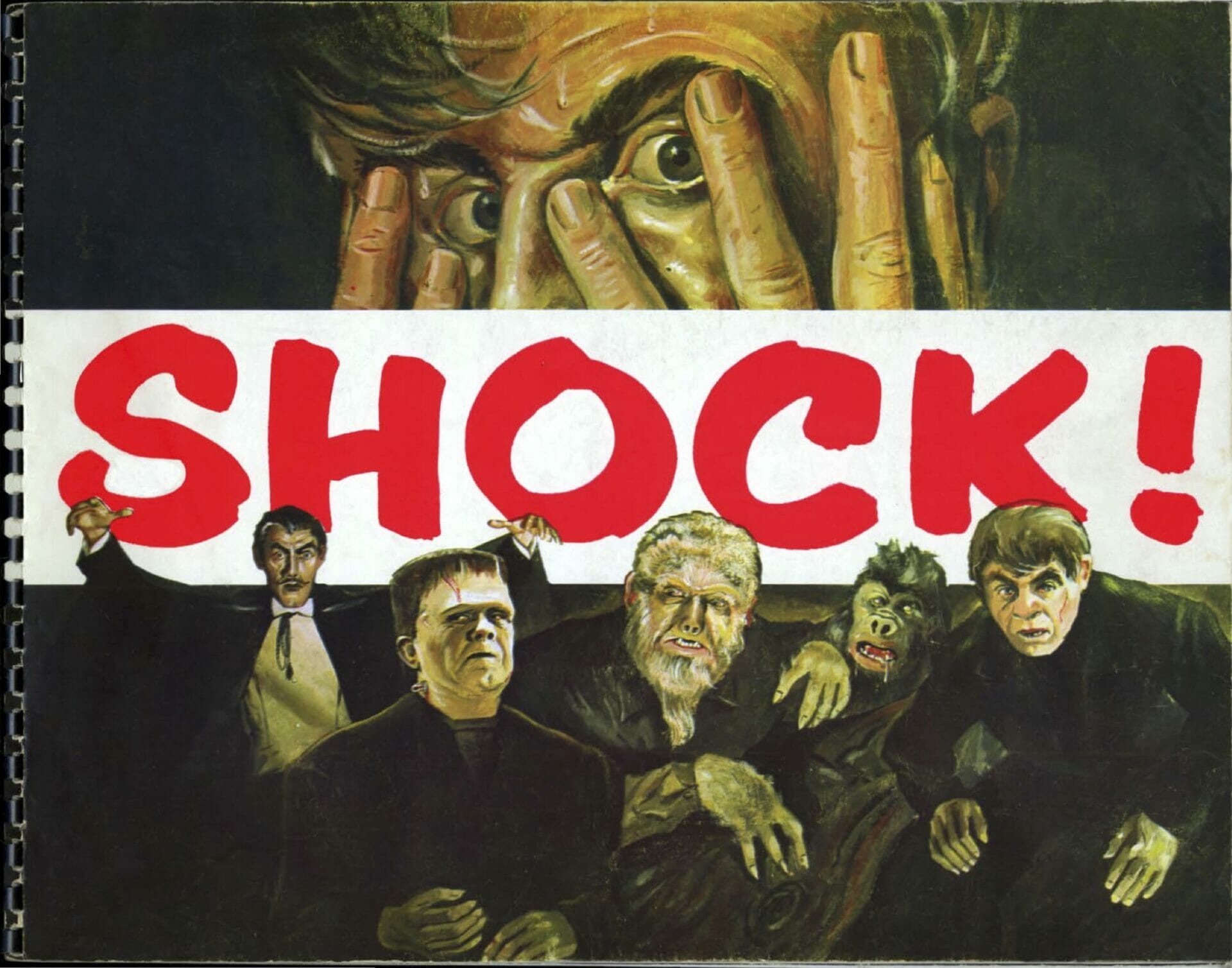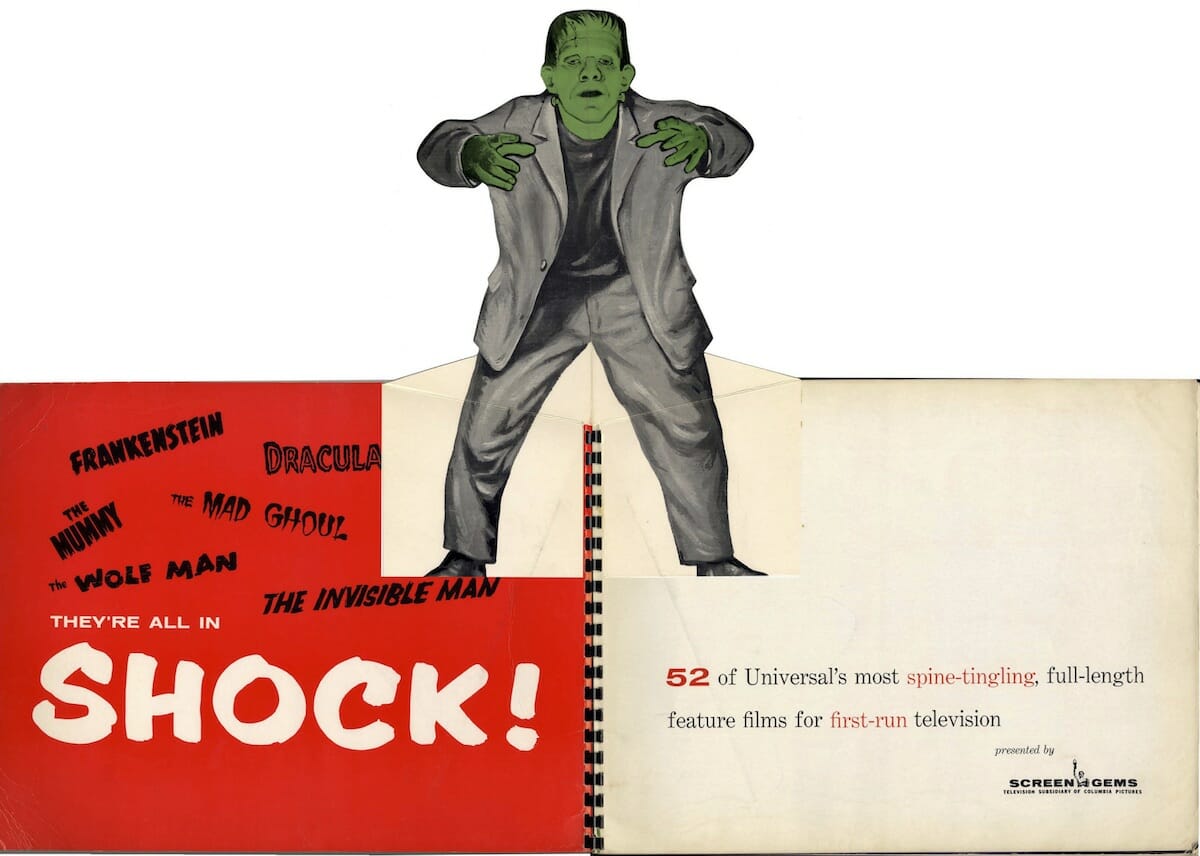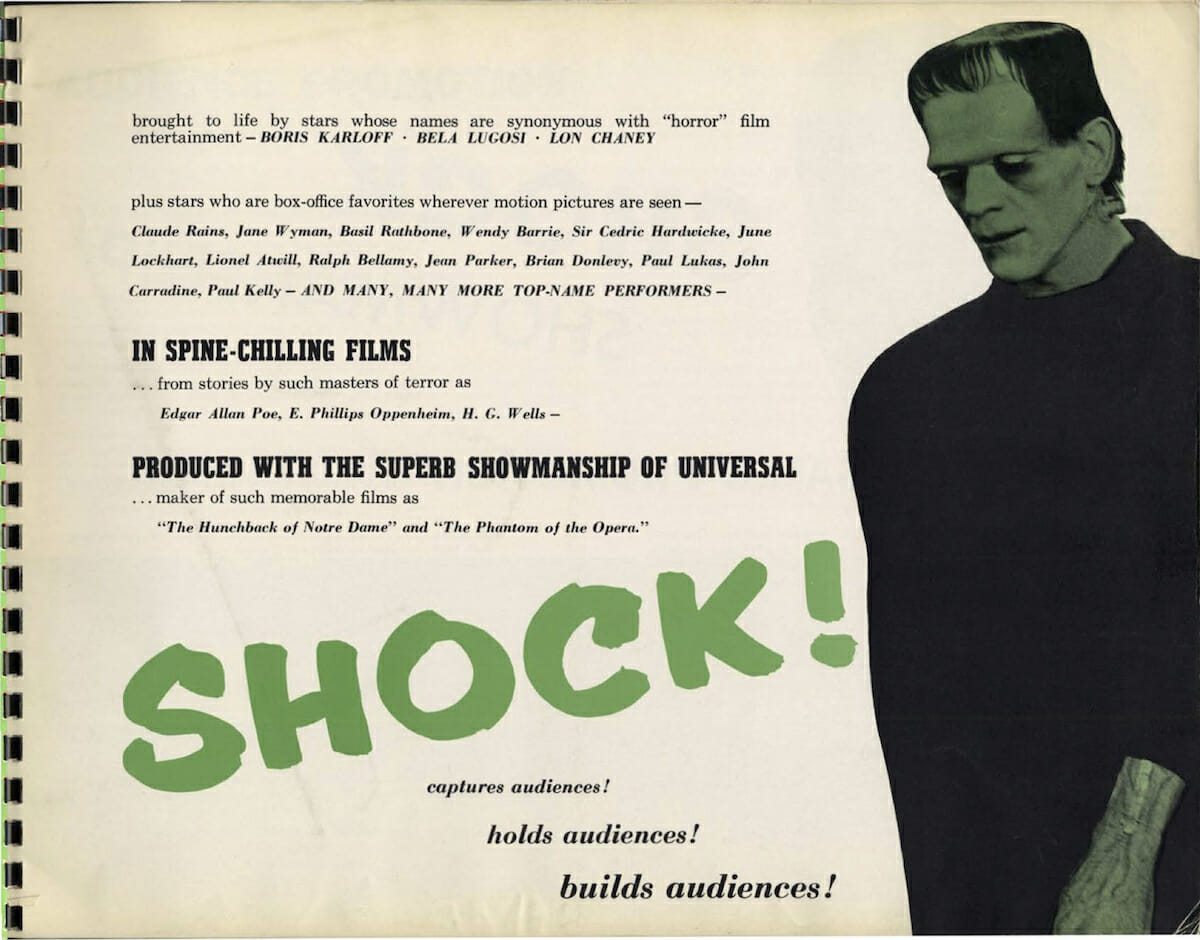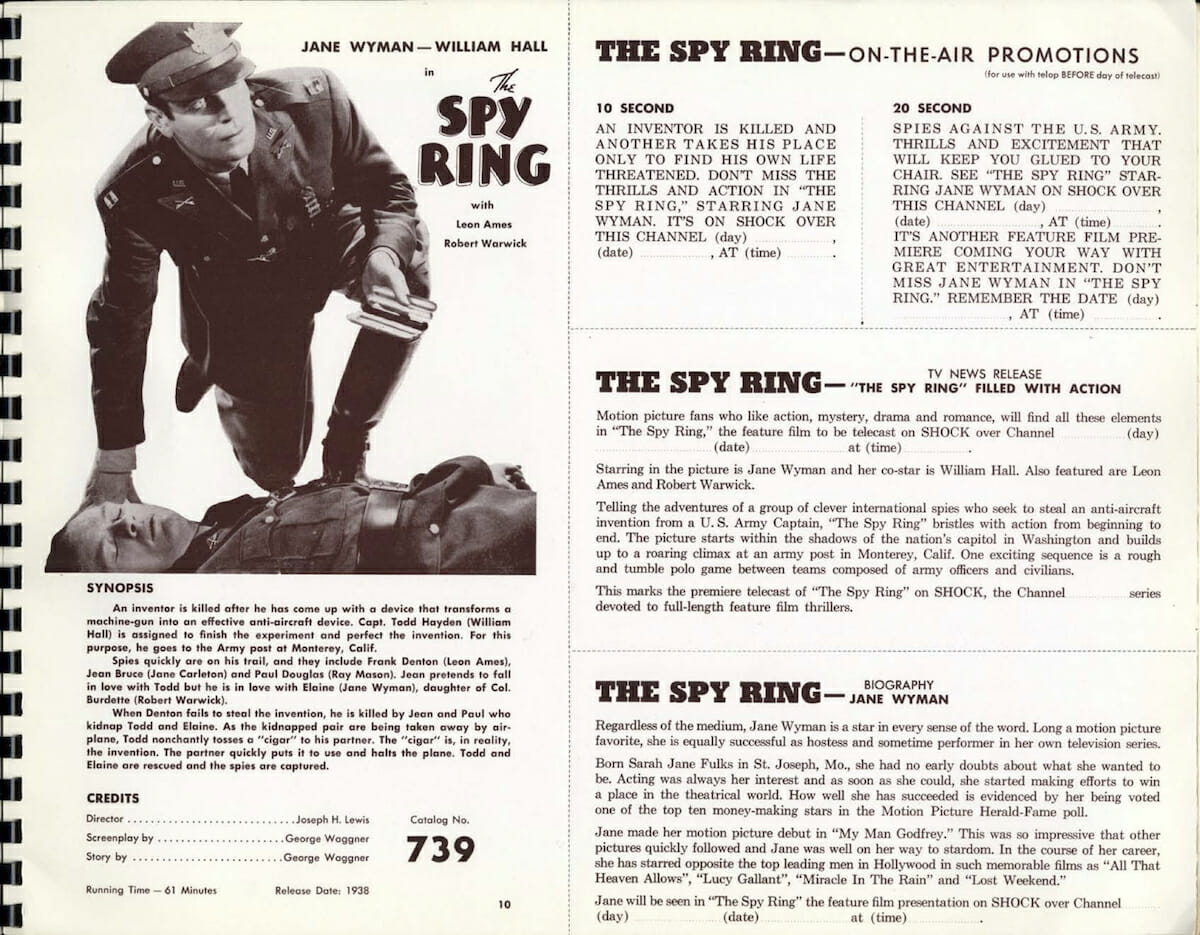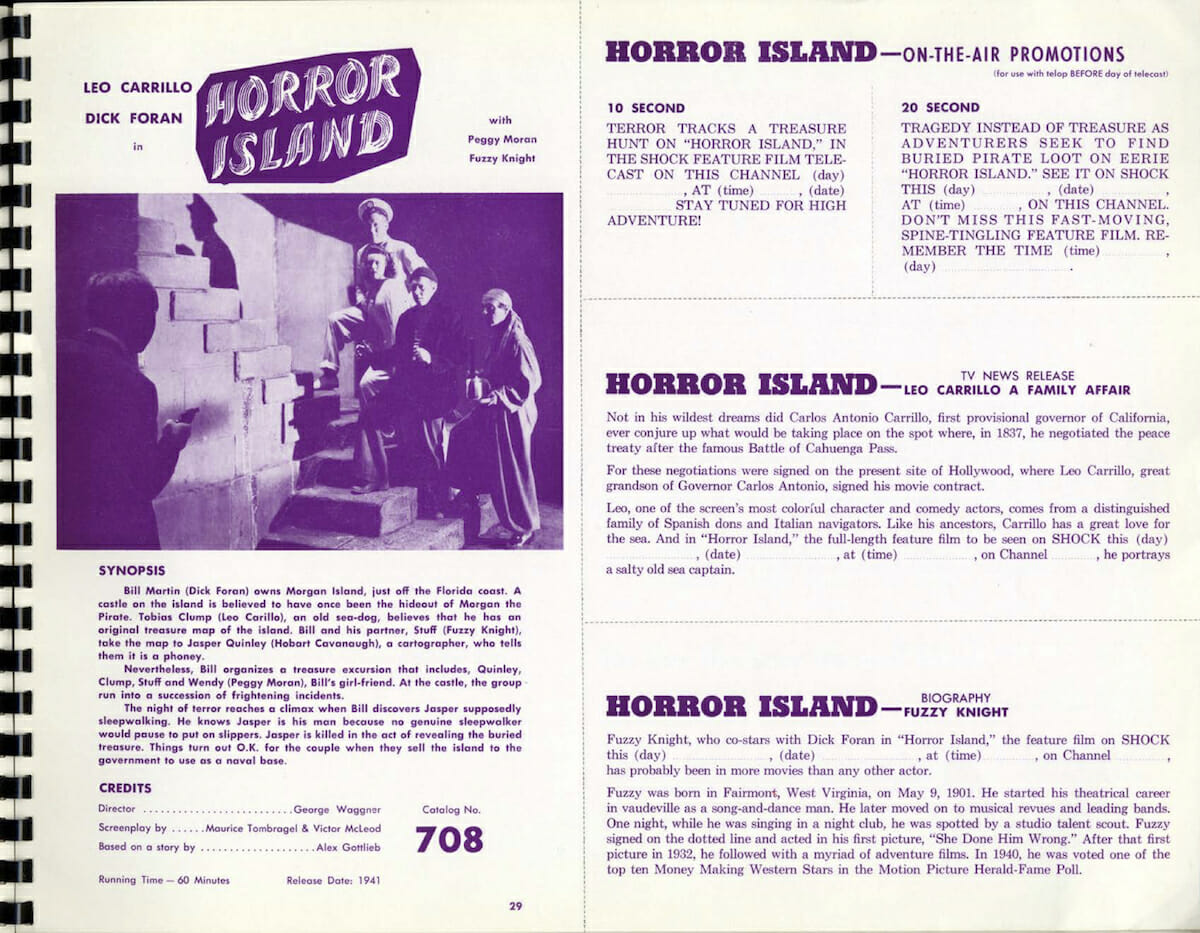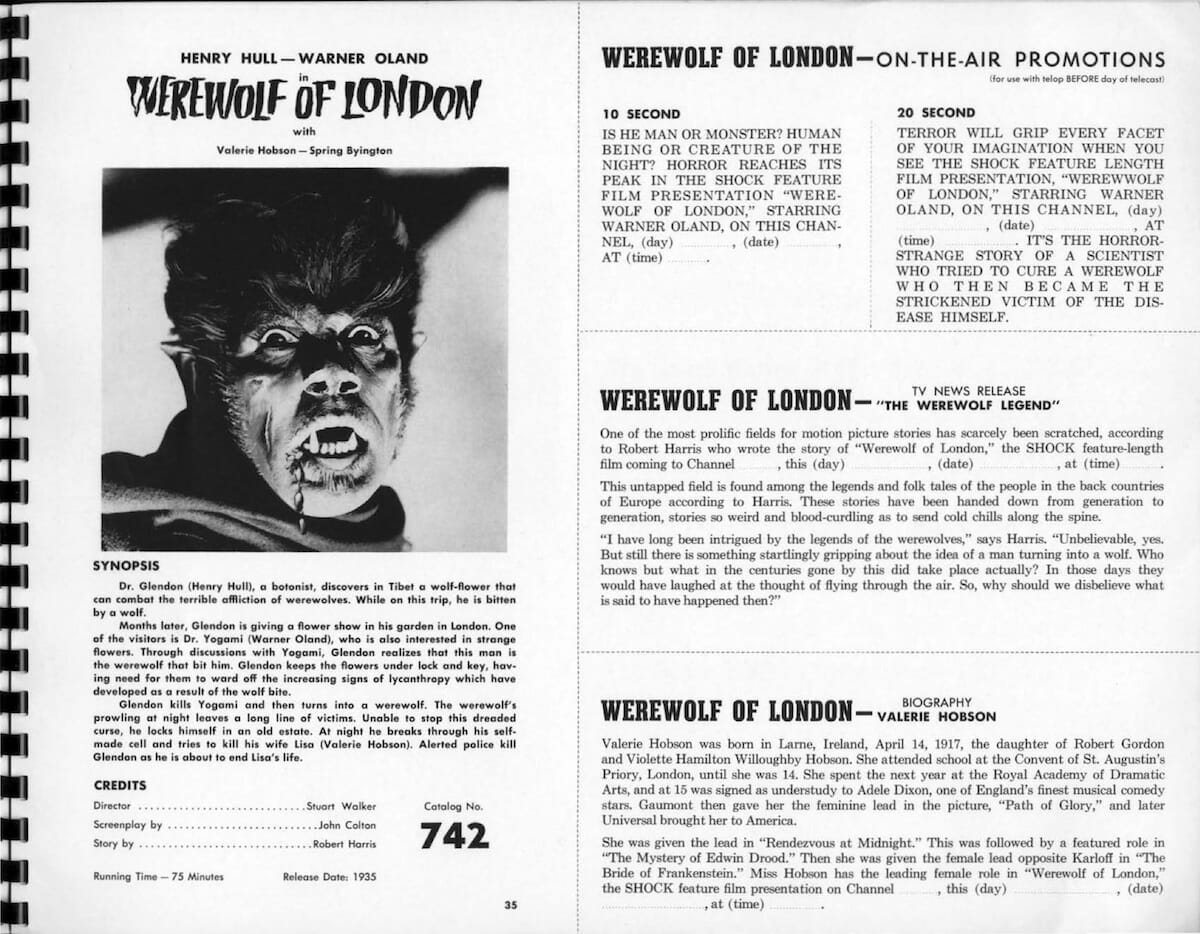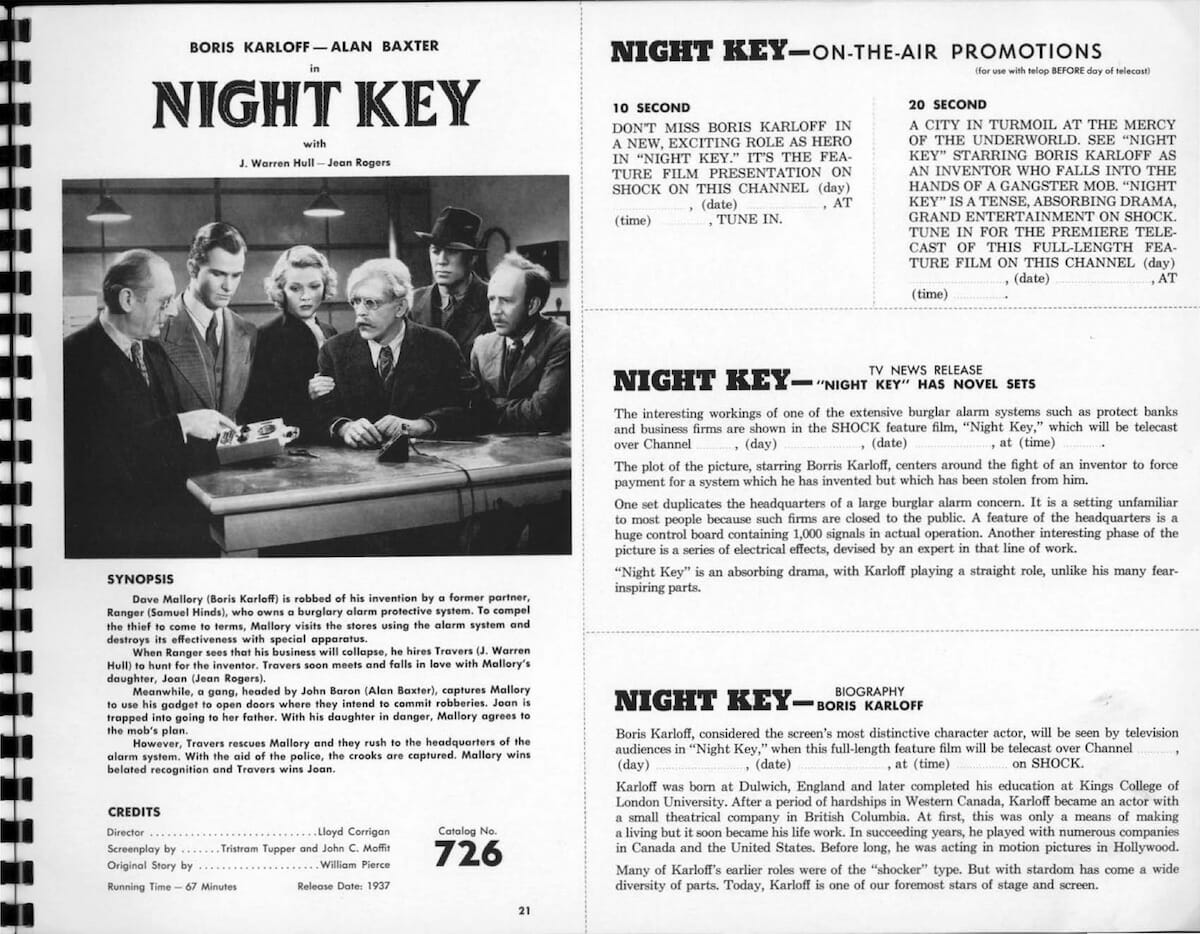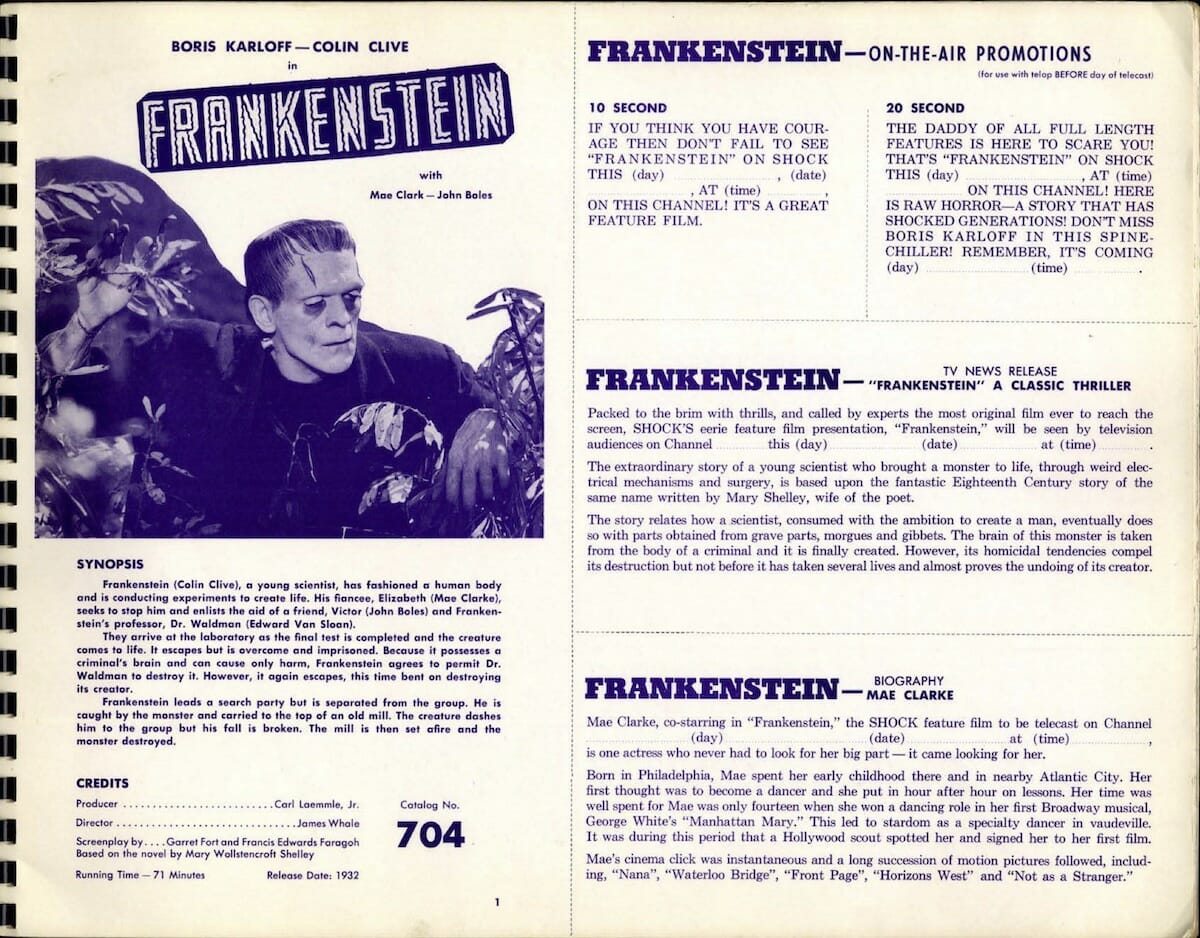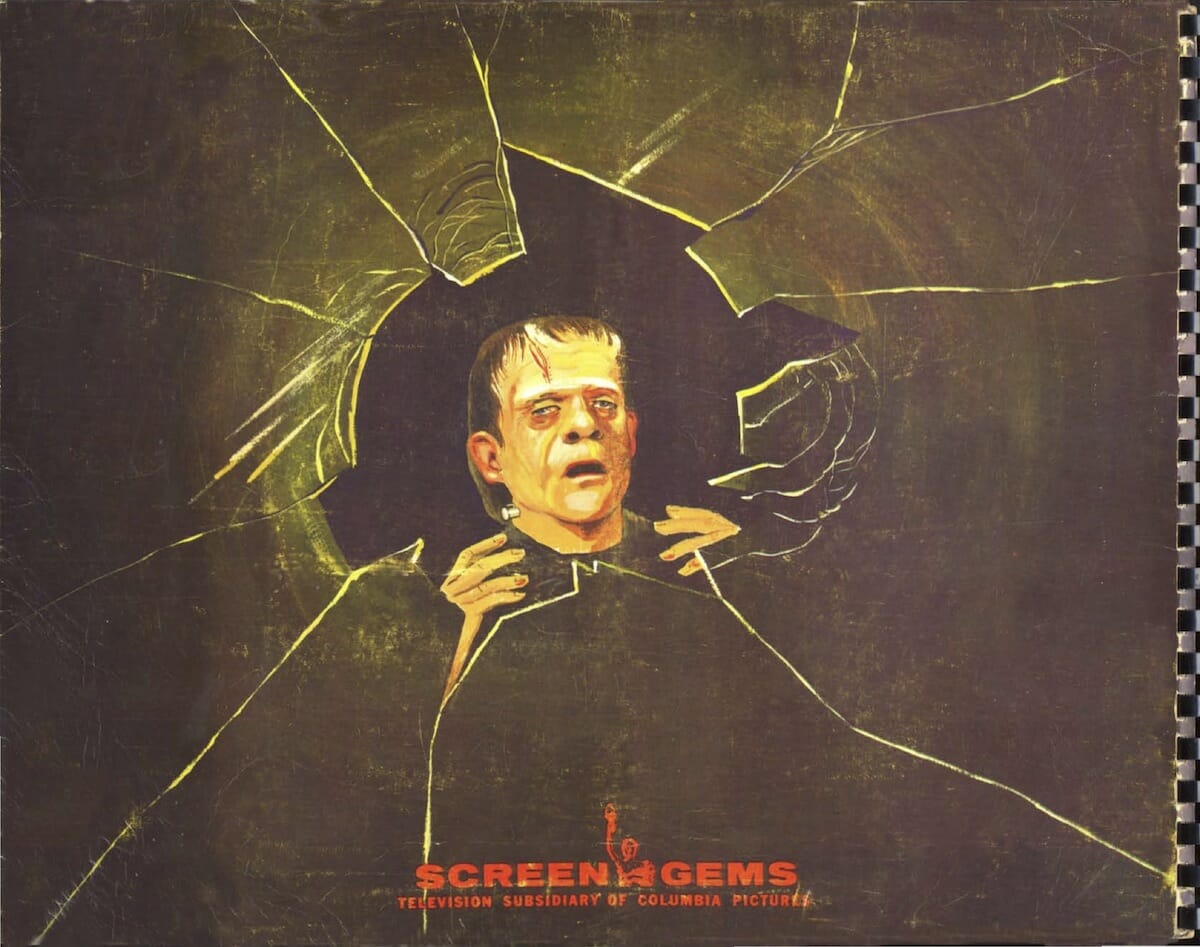Boris Karloff was the King of the Monsters for his portrayal of Frankenstein’s creature in three classic Universal horror films in the 1930s, and for playing other sinister characters in dozens of films well into the 1940s. But Karloff had always worn the crown somewhat uneasily, trying to avoid typecasting as an actor who could only frighten and terrorize. By 1957, he seemed to be done with the creature features that had brought him fame.
Half-a-hundred old Universal pictures, including the original 1931 Frankenstein, had just been released to air on television and Karloff, in a December 1957 interview with journalist Marie Torre of the Philadelphia Inquirer, expressed doubt about the staying power of the old films.
“I’m afraid that the men pushing the thrillers are in for a rude awakening,” Karloff said. “The Frankensteins and the Draculas were all right in their day, but now they’re rather old-fashioned, just a curiosity. We’ve all moved ahead since the Frankenstein era. While television finds that out for itself, I’ll go along my merry way in motion pictures.”
We have no wish to denigrate Karloff’s prognosticating, but even as he spoke, those old-fashioned curiosities were beginning to revolutionize television, as the Shock! package of 52 old horror films had begun popping up on local TV stations.
The impact of the Shock! package, first in ratings and then in popular culture, was huge.
Appetites for the old Universal horror films were being whet by new versions of the classics. British studio Hammer films had released The Curse of Frankenstein (starring Peter Cushing and Christoper Lee, as man and monster, respectively) to theaters a few months earlier; with “Horror of Dracula,” reuniting Cushing and Lee, following along in 1958. Hammer opened a floodgate, with sequel after sequel into the 1970s, and behind that floodgate was the color red: the Hammer films were in color and didn’t stint on bloodshed.
With monsters on everyone’s mind once again, the Shock! movie package was a bonanza for TV stations; boosting ratings, earning millions, and creating horror movie hosts, magazines, fan clubs, model kits and more. Not to mention that fans could watch the movies at home – albeit usually late at night.
As the United States was on the brink of its most turbulent decade in a hundred years, the 1960s, Shock! entertained the Baby Boomers who would later become known as the Monster Kids generation: Legions of boys and girls – and older fans too – who would not only help shape pop culture but culture itself as they grew into teens and young adults who challenged and slowly changed the status quo.
Sure, they might do so at first from the safety and anonymity of their bedrooms, family rooms and basement rumpus rooms. But these monster-loving Baby Boomers had an impact.
And it all began with Shock!
Borrow a coffin and add to the mood
For two decades after the Karloff Frankenstein and the Bela Lugosi Dracula were released to great box-office in 1931, Universal had found a way to continue to make money off the films. The movies were rereleased, sometimes paired, to excited crowds. Universal churned out sequels and spinoffs – eight in the Frankenstein series alone by 1948 – in numbers that would be the envy of any modern studio or streaming service.
With the rise of television, however – particularly in the 1950s when TV sets were welcomed into millions of homes – Universal saw another opportunity. Some studios feared TV and pioneered 3-D and widescreen experiences you couldn’t find at home.
Universal contracted with Columbia’s Screen Gems subsidiary to embrace TV – and the potential for a new revenue stream. Universal went all in: the studio licensed 550 films of all genres to Screen Gems, entertainment industry tabloid Billboard reported on June 17, 1957. This was at a time when TV networks and local stations were scrambling to fill airtime and some money-minded studios were only too happy to fill it.
In the fall of 1957, Screen Gems’ Shock! package began airing on local TV stations around the country. The films often – but not exclusively – aired in the late-night hours and were often – but not exclusively – accompanied by a horror host, a development that we’ll delve into later.
Shock! was odd in that not all the 52 movies in the package were outings involving the classic Universal monsters. Not all of the movies were even horror films – Danger Woman was a crime film andThe Spy Ring was about, well, spies out after a weapon of war; but the Shock! pressbook distributed in an effort to make dollar signs dance in TV station managers’ heads emphasized the monsters.
“For years, tales of terror, macabre stories of ghouls and ghosts have fascinated millions in every form of entertainment,” the pressbook opens. “Now, for the first time, this eerie world of the weird and supernatural comes to television with stunning impact in SHOCK – an irresistible attraction for mood programming of feature films.
“SHOCK brings your television audience what they have never had before – night after night of thrills and more thrills with the screen’s titans of terror, including the original … FRANKENSTEIN’S MONSTER … DRACULA … THE WOLF MAN … THE MAD GHOUL.
“SHOCK! … captures audiences! … holds audiences! … builds audiences!”
The pressbook, copies of which have been posted online, goes on to profile each of the films in the package and offers ideas for promoting the broadcasts. TV stations could arrange a party in a haunted house or “right in your own studio.” Stations could decorate their walls with masks and daggers or have a witch serving meatballs from a cauldron.
Or even better, “If you can, borrow a coffin to add to the mood.”
The guides to individual movies suggest other promotions and offer promotional language to be used in radio promos.
In the promos for Dead Man’s Eyes, star Lon Chaney – he’d dropped the “Jr.” from his name long before – “defends horror movies.”
“Chaney … disagrees with those who hold that horror films are a bad influence. Chaney … shares the opinion of psychiatrists who believe that most people have a sadistic streak, hereditary from the beginning of time. It is this streak which causes them to seek out fantastic horror films with scenes of murder and torture for entertainment.
“Horror pictures, says Chaney, are often an outlet for pent-up emotions. Far from being harmful, they tend to disperse whatever insane thoughts we may have because we are shown that evil thoughts can become monstrosities. By making the characters and the crimes hideous, we revolt the minds of moviegoers against evil tendencies.”
Sounds legit. At any rate, the station owners were not shy in promoting Shock!
“Get ready for a SHOCK treatment,” read a December 10, 1957 ad from WDAU Channel 22 in the Scranton Times. Along with a drawing of Frankenstein’s monster, the ad noted, “TONITE AT 11:25 PM AND EVERY TUESDAY NIGHT – Presenting the top spine-tingling, shock-packed movies, like Frankenstein, Dracula, Wolf Man, The Mummy The Werewolf.
The old movies were ‘all the rage’
The Shock! package was a huge hit. On October 14, 1957, Billboard reported, “Screen Gems is scoring one of the biggest ratings pay-offs of the current season by scaring the wits out of viewers.”
The movies were boosting ratings in five key TV markets by 38 to 1,125 percent, Billboard reported. In New York City, the TV premiere of Dracula won a 41 percent share of the audience. In Los Angeles, the premiere of “Frankenstein” boosted station KTLA from sixth to second place in the 9:30 to 11:30 time period. And Billboard reported an advertising sellout and one newspaper account reported more than $2 million in sales for Screen Gems.
“Hollywood’s old horror movies are currently the rage,” Pete Rahn wrote in the St. Louis Globe-Democrat on October 29, 1957. Rahn wrote that Shock! hadn’t yet made its way to a St. Louis TV station, but local stations were already airing other old genre films outside the package.
There was backlash, of course. On December 9, 1957, Donald Kirkley wrote in a column for the Baltimore Sun, “They cater to the same deplorable human traits which were exploited much more effectively by the Romans in their circuses and, long before that, by primitive tribesmen who took delight in watching the torture of captive enemies.
“Nobody knows why there has been such widespread acceptance of them, as indicated by the ‘ratings’ in many cities,” Kirkley added. “One guess is that people turn to such escape fiction in times of great stress and trouble. The first wave of popularity in the movies, which threw up Frankenstein, Dracula and the other box-office winners, came in the early years of the Depression. The 1930s vintage shockers now seem naïve, in technique as well as material, at their best. The Class B specimens are incredibly bad, and they comprise about 95 percent of Hollywood’s product.”
None of that mattered to TV stations or Screen Gems as long as audiences were tuning in and advertisers were happy, of course.
And like true movie successes, Shock! had a sequel – Son of Shock! The second package was released in 1958 and featured another 20 movies including classics like “Bride of Frankenstein.”
The pop culture is impact obvious – to some
The popularity of the Shock! packages were obvious. The influence on pop culture might have been less so – at first. But some picked up on it quickly…
In that October 29, 1957 piece for the St. Louis Globe-Democrat, columnist Pete Rahn wrote one of the earliest assessments of the impact of the Shock! package on pop culture.
“Perhaps some viewers have also noticed the marked increase in the number of sketches on comedy and variety shows which have to do with horror themes. Of course they are given a comedy slant, but the characters on TV nowadays who are making like the Frankenstein monster or dressing in gorilla suits are not only taking advantage of Halloween’s imminence, they are also cashing in the horror vogue sweeping the other TV towns.”
The actor who brought Frankenstein’s monster to life – and who would go on to say in December he didn’t think the old monsters had much life in them – was already capitalizing on the comeback, Rahn noted.
“The bellwether of Hollywood’s boogey-man binge of the 1930s and 1940s was Boris Karloff’s Frankenstein. Karloff’s portrayal of the stiff-legged, grunting, scar-faced monster sparked seven (sic) “Frankenstein” movies in all and right now their popularity on TV is reaping him a bonanza in guest appearances. He was with Dinah Shore on Sunday evening and will appear with Rosemary Clooney on Thursday.
“It’s a cinch that television won’t stop when the old Hollywood horror pictures run dry,” Rahn wrote.
Neither TV nor movies nor pop culture would stop.
Monsters and cold, hard cash
It’s always fascinating when a popular trend gives rise to jobs that nobody knew were needed before. The Shock! package gave birth to the local horror movie host.
Actress Malia Nurmi created the Vampira character for a Los Angeles TV station in 1954, well before the Shock! package – but the package of movies eventually prompted stations to create a host for the movies they aired. Horror hosts – some attempting to be spooky, some attempting to be satirical and all with some tongue in cheek – were locally or, at best, regionally famous. The horror show host in Atlanta would be totally unknown to fans of the host in Cleveland, for example. A few hosts transcended those regional limitations. Pennsylvania-and-New-York horror host John Zacherle could have been the prototype for all these characters but it’s likely local hosts fleshed out their own ghoulish portrayals.
Where I grew up in Central Indiana, Indianapolis-based Sammy Terry, played by Bob Carter, a mild-mannered music store owner and TV advertising pioneer, had a loyal following that endures: Carter’s son now plays the character for online and in-person appearances. Nationally, Svengoolie (Rich Koz) and Elvira (Cassandra Peterson) have carried on the tradition. The horror hosts enhanced, or at least didn’t hurt, the Shock! package ratings, but nothing cemented the popularity of the returned monsters was merchandise, for which fans paid cold, hard cash.
Aurora Plastics Corporation – better known simply as Aurora – had sold aircraft and auto model kits to little boys since 1950. But the introduction of the Frankenstein kit in 1961 cemented – sorry – the company’s cult standing. Most of the Universal monsters followed, as did Godzilla and atmospheric kits like “The Witch,” a generic witch with cauldron.
Bubblegum cards. Comic books. TV shows like The Munsters from 1964 and Mad Monster Party from 1967, the latter featuring the voice of … Boris Karloff, who also voiced the Grinch. Halloween costumes (the type that are basically a tunic that says “FRANKENSTEIN” on it, with a stifling plastic mask). Monster drinking glasses. Frankenstein, Wolf Man and Creature from the Black Lagoon Pez dispensers. Ultra-realistic Don Post rubber masks. In 1987, The Monster Squad brought back the most notable Universal monsters which, by this time, had become such pop culture mainstays that they needed no explanation or introduction for a generation a few times removed.
There just might not be a more impactful legacy of the Shock! package than Famous Monsters of Filmland magazine. Publisher James Warren and editor Forrest Ackerman were planning a quick, profitable one-shot magazine to capitalize on Shock! But the one-shot, published in February 1958, lasted until 1983 and influenced young fans including some who grew up to be writers and filmmakers.
In his fun 2015 book Monster Mash: The Creepy, Kooky Monster Craze in America 1957-1972, author Mark Voger practically cataloged the peaks of the horror mania that followed the Shock! package, from masks to toys to TV shows.
“The influence of Shock! can scarcely be overestimated,” Voger wrote.
Millions and millions of Baby Boomers stewed in the witch’s cauldron that was the Shock! movie package.
One of the most prominent members of the generation, Stephen King, paid homage to classic monsters like Dracula in his 1986 novel It. King had been an avid follower of Famous Monsters magazine and recounts in one of his semi-memoirs about writing a piece for the magazine when he was still a novice.
In 1968, when the Shock! package was a little more than 10 years old, more than 500,000 young Americans served in Vietnam. In 1969, more than 400,000 people gathered at Woodstock. How many thousands protested in Chicago in August 1968? How many carried half-forgotten thoughts of Frankenstein’s monster, or Dracula, or a deluxe rubber mask or cheap Halloween costume, with them; and for that matter, how many carried Shock! in their blood and in the back of their brains.
